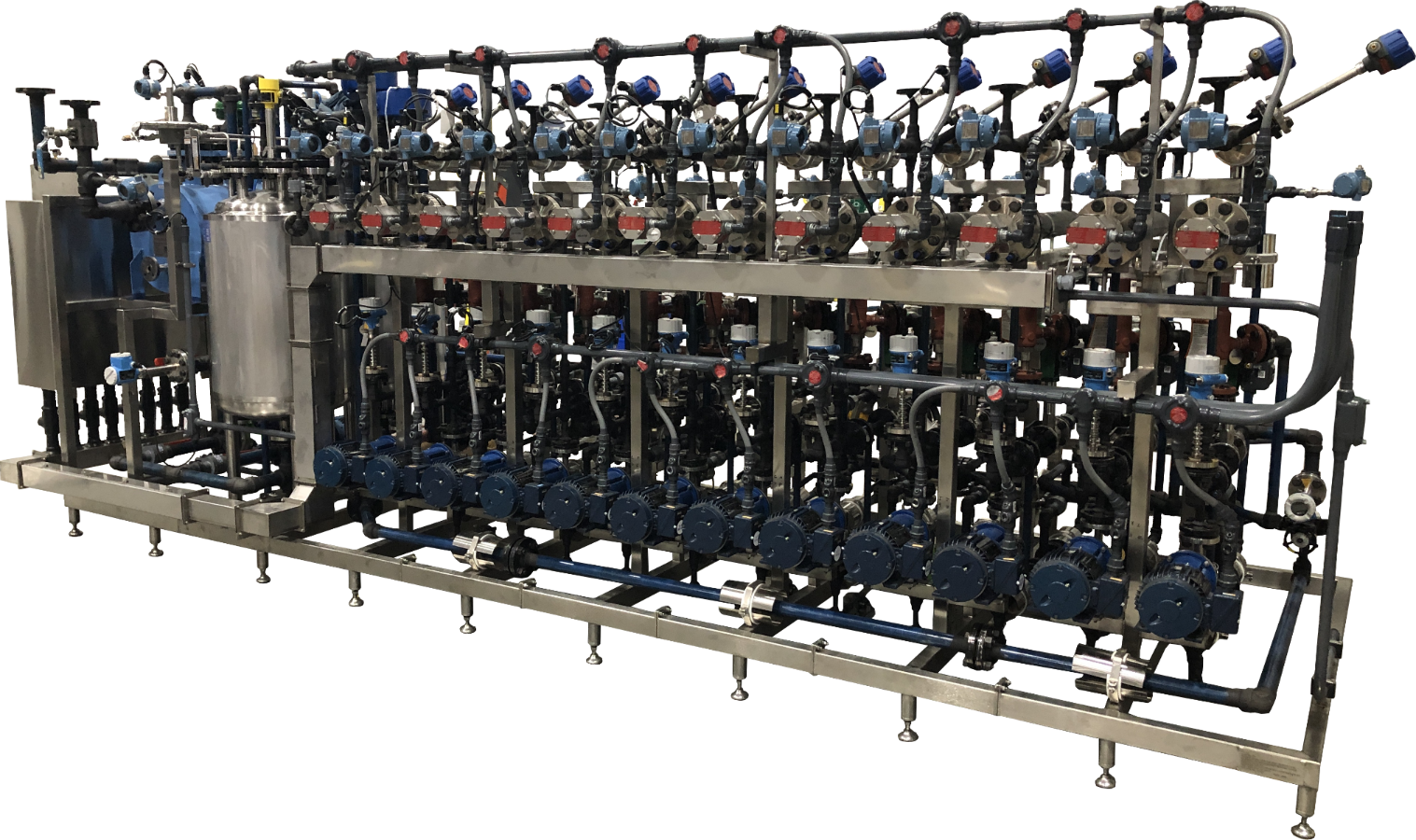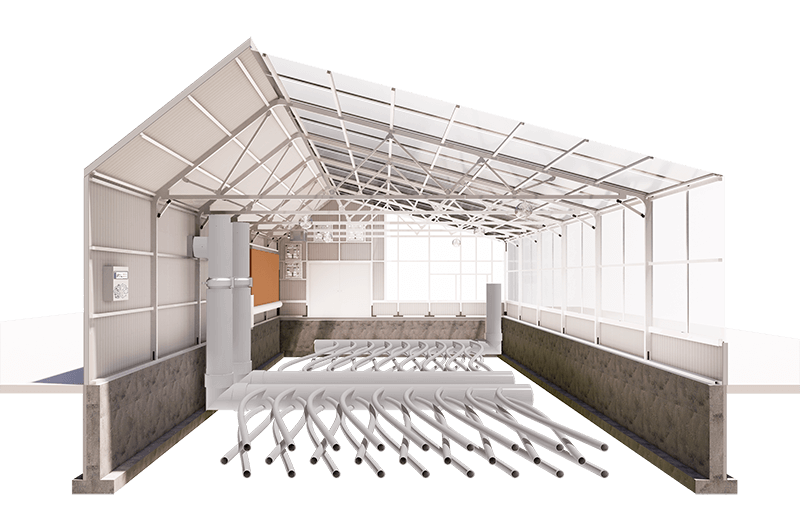Advancements in Heat Transfer Solutions: What You Need to Know for Ideal Efficiency
Advancements in Heat transfer systems are changing performance across numerous markets. Advanced products like graphene and nanofluids assure substantial renovations in thermal conductivity. The integration of IoT and maker understanding provides opportunities for real-time surveillance and boosted power efficiency. However, the landscape of thermal administration is swiftly progressing (DVS Heat Transfer Systems). Recognizing these advancements is necessary for accomplishing suitable system performance and sustainability in the future. What details innovations are shaping this change?
Emerging Materials for Improved Heat Transfer

Advanced Heat Exchanger Styles
While typical Heat exchangers have offered their objective in various applications, advanced layouts are now emerging to satisfy the raising demands for efficiency and efficiency. These ingenious designs, such as plate, shell-and-tube, and finned-tube Heat exchangers, incorporate enhanced surface area areas and enhanced flow patterns to raise thermal transfer rates. In addition, compact designs permit reduced area requirements without endangering performance. Advanced materials, such as compounds and corrosion-resistant alloys, additionally enhance longevity and efficiency under extreme problems. Simulation innovations and computational fluid characteristics are significantly utilized to improve these designs, ensuring peak Heat transfer qualities. As sectors look for to decrease power intake and optimize output, the fostering of sophisticated Heat exchanger styles is crucial in achieving these goals.
The Function of Nanotechnology in Heat Transfer
Nanotechnology plays a vital role in improving thermal conductivity within Heat transfer systems. By manipulating materials at the nanoscale, researchers have actually attained considerable renovations in power efficiency. These developments not only enhance efficiency yet likewise add to even more sustainable power solutions.
Enhanced Thermal Conductivity
Considerable developments in thermal conductivity have actually emerged via the application of nanotechnology, transforming Heat transfer systems throughout different sectors. By integrating nanoparticles into Heat transfer fluids and products, researchers have achieved exceptional increases in thermal conductivity. These nanoparticles, such as carbon nanotubes, graphene, and metal oxides, boost the Heat transfer buildings due to their high area and distinct thermal qualities. The resulting compounds exhibit enhanced performance in applications varying from electronic devices cooling down systems to sustainable power modern technologies. The ability to tailor the size, shape, and make-up of nanoparticles allows for optimized thermal administration options. Because of this, nanotechnology continues to play a critical duty in the growth of a lot more effective and efficient Heat transfer systems, paving the way for improved industrial applications.
Power Performance Improvements

Integration of IoT in Heat Transfer Equipments
The assimilation of IoT in Heat transfer systems introduces the implementation of clever sensing units that enhance functional efficiency. These sensors allow real-time data surveillance, allowing for prompt adjustments and optimizations. This technical improvement has the potential to substantially enhance performance and power administration in Heat transfer applications.
Smart Sensors Implementation
As Heat transfer systems develop, the combination of clever sensing units via the Web of Things (IoT) has become a transformative see it here method. These sensing units allow real-time surveillance of stress, circulation, and temperature level prices, improving system performance and integrity. By accumulating and transferring information, they assist in proactive upkeep, reducing the risk of system failings. In addition, wise sensors add to energy financial savings by refining functional specifications based upon environmental problems. Their ability to assess anomalies and patterns enables for informed decision-making, making certain peak efficiency of Heat transfer systems. As sectors significantly adopt this modern technology, the application of clever sensing units stands to revolutionize exactly how Heat transfer systems are managed, leading the way for better sustainability and improved efficiency outcomes.
Real-Time Information Surveillance
Exactly how can real-time data keeping track of improve the effectiveness of Heat transfer systems? By incorporating Web of Points (IoT) technology, Heat transfer systems can take advantage of continual information collection from smart sensors. This real-time surveillance enables for prompt analysis of circulation, temperature, and pressure prices, allowing operators to recognize inefficiencies promptly. Changes can be made to optimize performance, minimize energy intake, and extend equipment lifespan. Furthermore, anticipating maintenance can be implemented, reducing unanticipated downtime and costly repair services. The ability to visualize performance metrics through dashboards enhances decision-making, fostering an aggressive technique to system monitoring. Ultimately, real-time data keeping track of not only boosts functional performance however also adds to sustainability objectives within commercial procedures.
Power Effectiveness and Sustainability Trends
Power performance and sustainability trends are improving the landscape of Heat transfer systems, driving development and conformity across different markets. Organizations are increasingly prioritizing energy-efficient designs to lower functional costs and reduce ecological effects. The combination of renewable resource sources is coming to be extra widespread, enabling Heat transfer systems to operate sustainably while meeting governing requirements. Furthermore, innovations in materials and innovations advertise lower power usage and boost overall efficiency. Lifecycle assessments are likewise acquiring traction, enabling companies to examine the ecological influence of Heat transfer systems from production to disposal. This focus on sustainability not only sustains company duty however additionally positions organizations competitively in a market where consumers progressively favor green solutions. Consequently, energy efficiency and sustainability continue to be important considerations for future advancements in Heat YOURURL.com transfer technology.
Developments in Thermal Management Solutions
While the demand for effective Heat transfer proceeds to rise, advancements in thermal monitoring options are arising to attend to both performance and sustainability challenges. Advanced materials, such as phase change materials and nanofluids, are being created to boost Heat transfer performance - DVS Heat Transfer Systems. These products improve thermal conductivity and enable far better temperature regulation in different applications. Furthermore, technologies like energetic thermal control systems are acquiring grip, enabling real-time changes to take care of Heat flow effectively. These systems add to energy savings and decrease the ecological impact of thermal processes. Additionally, the integration of IoT in thermal monitoring helps with tracking and predictive upkeep, making certain maximized performance and long life of Heat transfer systems. Generally, these advancements stand for significant strides toward even more sustainable thermal monitoring methods
Future Instructions in Heat Transfer Technology
Arising advancements in thermal monitoring solutions signify an appealing future for Heat transfer innovation. Researchers are increasingly concentrating on developing products with superior thermal conductivity and improved energy effectiveness. Developments such as nanofluids, which include suspended nanoparticles, use considerable enhancements in Heat transfer performance. Additionally, the assimilation of wise materials that adjust to differing temperature problems is getting traction, permitting even more receptive and reliable systems. The increase of additive production strategies is likewise allowing the design of complex Heat exchanger geometries that maximize liquid circulation. The implementation of maker learning algorithms website here is anticipated to change the optimization of Heat transfer systems, promoting predictive upkeep and efficiency enhancement. Collectively, these improvements are poised to transform the landscape of Heat transfer innovations in various industries.

Frequently Asked Questions

How Do I Select the Right Heat Transfer System for My Application?
Picking the right Heat transfer system involves evaluating application requirements, including temperature varieties, fluid residential properties, and efficiency requirements. Examining system types, maintenance factors to consider, and cost-effectiveness additionally plays a necessary duty in making a notified choice.
What Are the Maintenance Demands for Advanced Heat Exchangers?
Maintenance demands for advanced Heat exchangers commonly include routine examinations, keeping an eye on for leaks, cleansing of surface areas, and ensuring optimal circulation rates. Abiding by manufacturer standards guarantees effective operation and prolongs the tools's life-span.
Just How Do Environmental Aspects Impact Heat Transfer Efficiency?
Environmental elements considerably affect Heat transfer efficiency. Variations in moisture, temperature level, and air flow influence thermal conductivity and convective Heat transfer, eventually influencing system efficiency and necessitating factor to consider during the design and operation of Heat transfer systems.
What Safety And Security Specifications Put On Heat Transfer Systems?
Safety standards for Heat transfer systems normally include standards from companies such as ASME and ASTM. DVS Heat Transfer Systems. These criteria address products, layout, and functional practices to guarantee reliability, effectiveness, and defense against hazards in different applications
Just How Can I Troubleshoot Usual Heat Transfer System Issues?
Repairing typical Heat transfer system concerns includes checking for leakages, ensuring appropriate liquid circulation, checking insulation stability, and confirming temperature level differentials. Determining these factors can aid keep system performance and prevent further difficulties.
Nanotechnology plays a vital function in boosting thermal conductivity within Heat transfer systems. Substantial improvements in thermal conductivity have actually arised via the application of nanotechnology, transforming Heat transfer systems across numerous markets. Improvements in thermal conductivity with nanotechnology have actually led the way for amazing enhancements in power effectiveness within Heat transfer systems. Power performance and sustainability fads are reshaping the landscape of Heat transfer systems, driving advancement and conformity across different markets. The combination of IoT in thermal administration assists in surveillance and anticipating maintenance, guaranteeing maximized efficiency and longevity of Heat transfer systems.